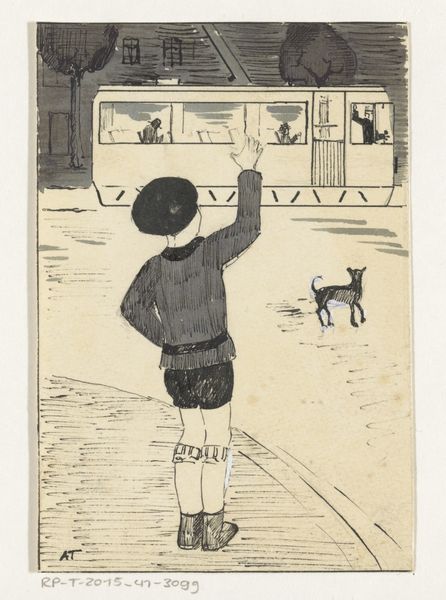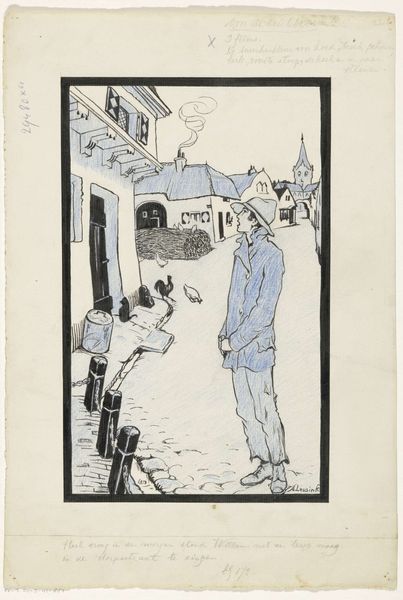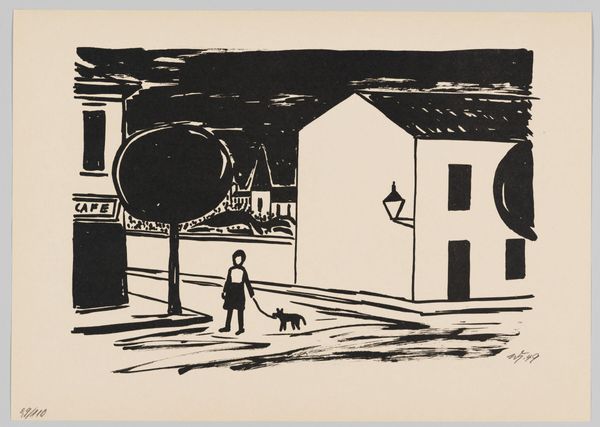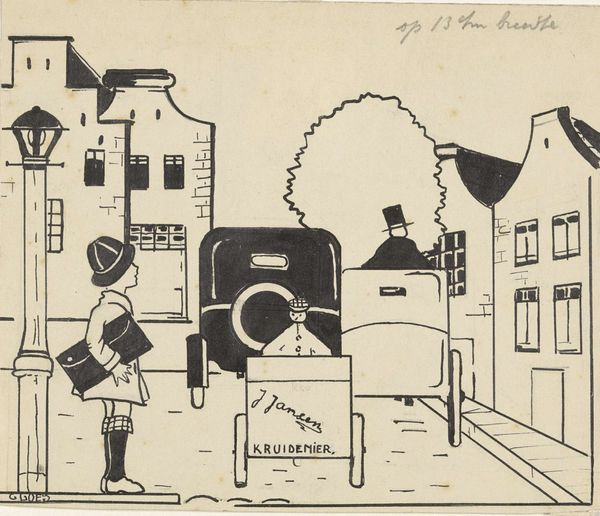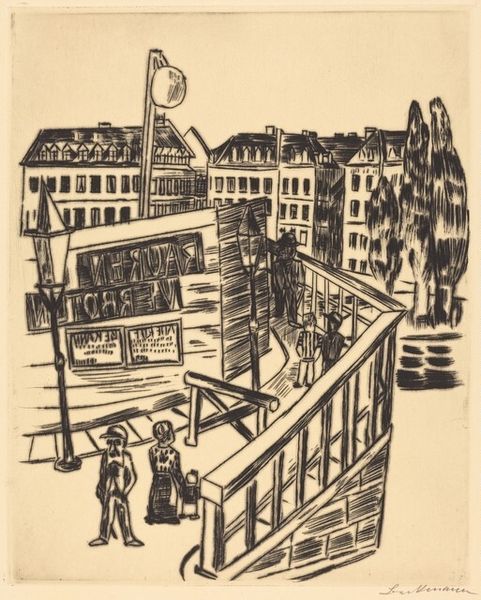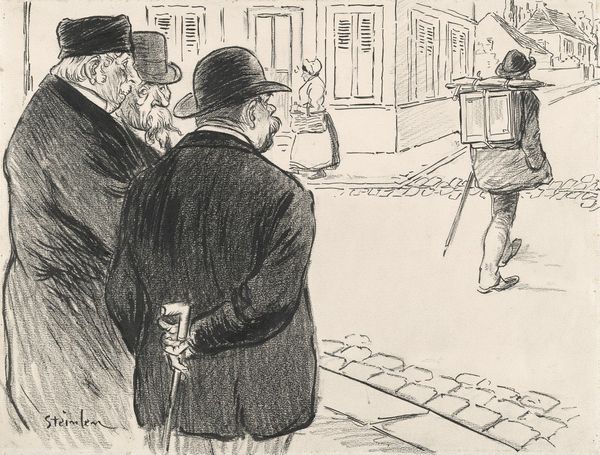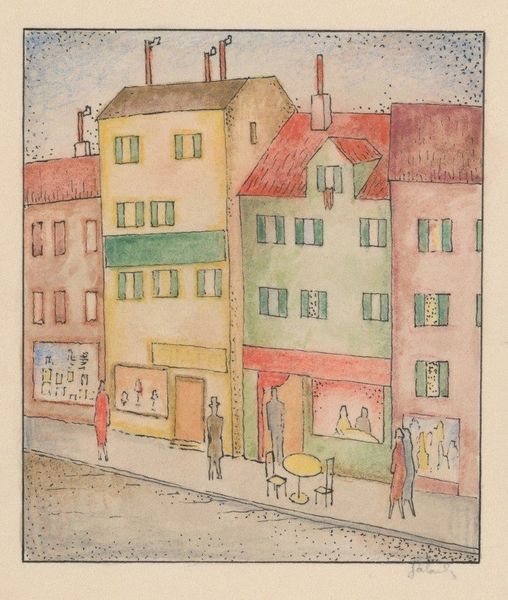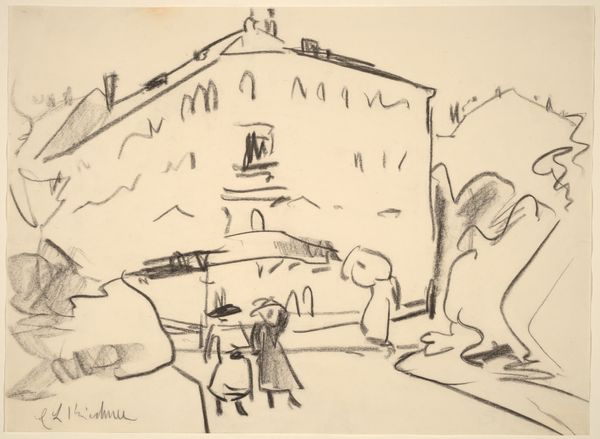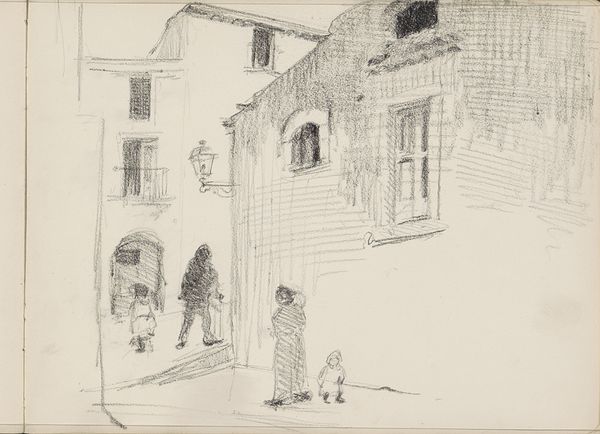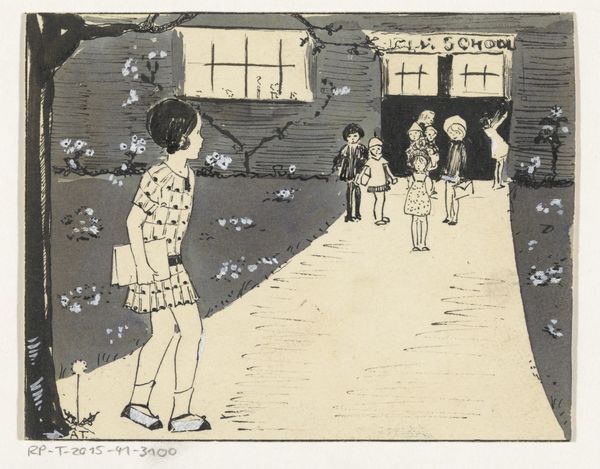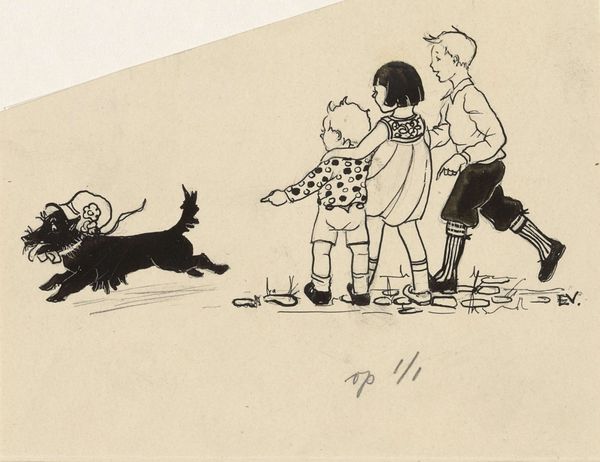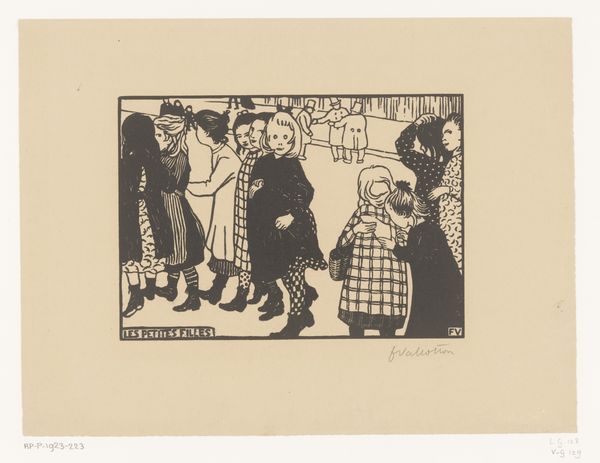
drawing, watercolor
#
drawing
#
quirky illustration
#
cartoon like
#
caricature
#
cartoon sketch
#
personal sketchbook
#
watercolor
#
illustrative and welcoming imagery
#
sketchbook drawing
#
cityscape
#
watercolour illustration
#
cartoon style
#
storyboard and sketchbook work
#
cartoon carciture
Dimensions: 140 mm (height) x 167 mm (width) (bladmaal)
Curator: This drawing, aptly titled "Ligkistemagasin", was created sometime between 1897 and 1949 by Robert Storm Petersen. It resides at the Statens Museum for Kunst, or the National Gallery of Denmark. Editor: Immediately, it's the dark humor that jumps out. The whole composition, from the muted watercolors to the exaggerated figures, has a quirky, slightly morbid charm. Curator: Petersen, or "Storm P" as he was known, often used caricature to comment on Danish society. He produced a lot of drawings and watercolors and much of his practice included making sketchbooks, the visual record of his environment, in other words. Here, he presents a coffins "magasin", as you see. Editor: Right, and there's something about the simplification of form that lends itself to the caricature. Note the stark geometric shape of the building front against the rounded, almost balloon-like quality of the figures. It highlights a kind of artificiality of modern urban life. It’s cleverly offset by the handmade quality, watercolor adding depth while highlighting the contrast between a store mannequin and human frailty. Curator: Absolutely. Petersen often blurred the lines between high art and popular illustration. Here we can appreciate the skilled draftsmanship combined with the social critique, making his work so relatable even today. A coffin shop may be considered humorous but he challenges its commodification. It offers an access point to reflect on mortality for every viewer. Editor: It's that juxtaposition that gives the image its power. The lightness of the medium, combined with the dark subject matter, creates this unsettling yet funny commentary. What strikes you as the drawing's enduring appeal? Curator: For me, it is Petersen's democratic approach. The fact that he utilizes humor as a tool, and accessible methods of making allows him to communicate profound themes about the way in which we produce meaning around the themes that no one can escape. Editor: A poignant point. The work’s charm lies not only in the formal composition or its quirky aesthetic, but also in its enduring commentary on consumer culture and mortality itself. It asks us to laugh, yes, but also to reflect.
Comments
No comments
Be the first to comment and join the conversation on the ultimate creative platform.
